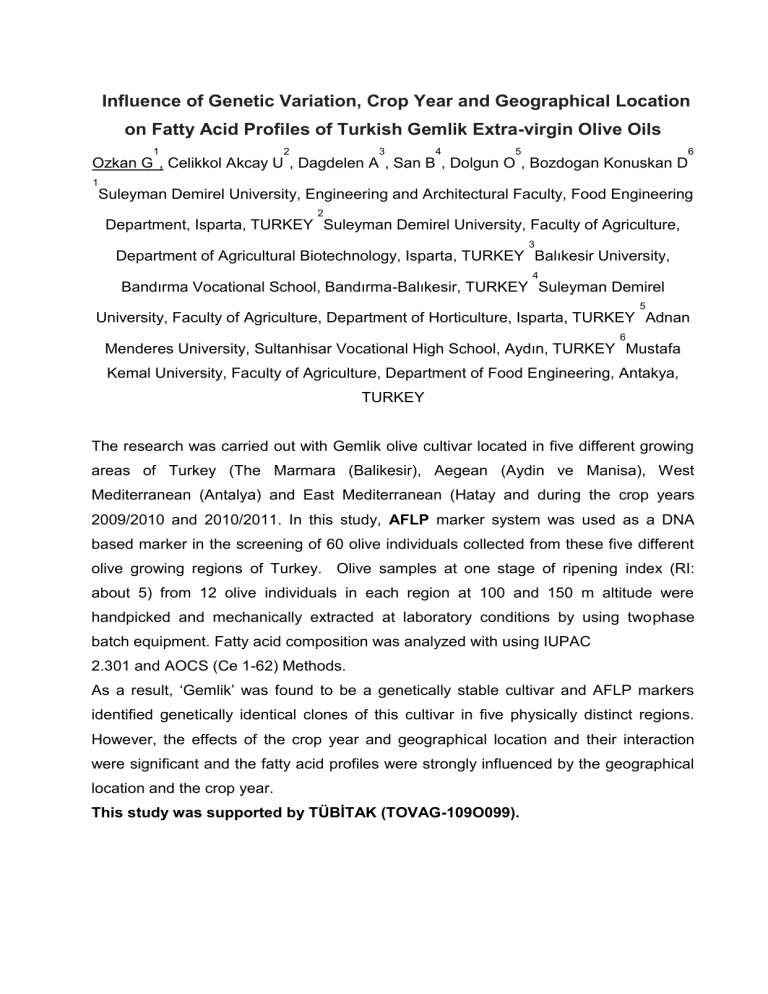
Influence of Genetic Variation, Crop Year and Geographical Location
on Fatty Acid Profiles of Turkish Gemlik Extra-virgin Olive Oils
1
2
3
4
5
6
Ozkan G , Celikkol Akcay U , Dagdelen A , San B , Dolgun O , Bozdogan Konuskan D
1
Suleyman Demirel University, Engineering and Architectural Faculty, Food Engineering
2
Department, Isparta, TURKEY Suleyman Demirel University, Faculty of Agriculture,
3
Department of Agricultural Biotechnology, Isparta, TURKEY Balıkesir University,
4
Bandırma Vocational School, Bandırma-Balıkesir, TURKEY Suleyman Demirel
5
University, Faculty of Agriculture, Department of Horticulture, Isparta, TURKEY Adnan
6
Menderes University, Sultanhisar Vocational High School, Aydın, TURKEY Mustafa
Kemal University, Faculty of Agriculture, Department of Food Engineering, Antakya,
TURKEY
The research was carried out with Gemlik olive cultivar located in five different growing
areas of Turkey (The Marmara (Balikesir), Aegean (Aydin ve Manisa), West
Mediterranean (Antalya) and East Mediterranean (Hatay and during the crop years
2009/2010 and 2010/2011. In this study, AFLP marker system was used as a DNA
based marker in the screening of 60 olive individuals collected from these five different
olive growing regions of Turkey. Olive samples at one stage of ripening index (RI:
about 5) from 12 olive individuals in each region at 100 and 150 m altitude were
handpicked and mechanically extracted at laboratory conditions by using twophase
batch equipment. Fatty acid composition was analyzed with using IUPAC
2.301 and AOCS (Ce 1-62) Methods.
As a result, ‘Gemlik’ was found to be a genetically stable cultivar and AFLP markers
identified genetically identical clones of this cultivar in five physically distinct regions.
However, the effects of the crop year and geographical location and their interaction
were significant and the fatty acid profiles were strongly influenced by the geographical
location and the crop year.
This study was supported by TÜBİTAK (TOVAG-109O099).
